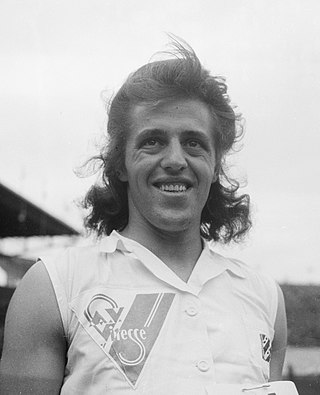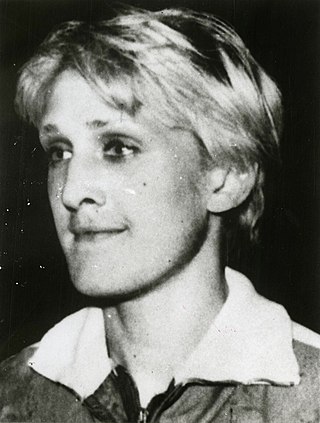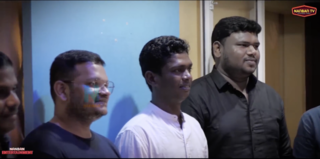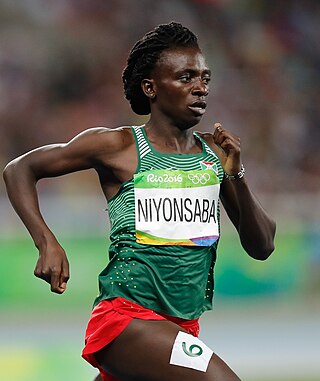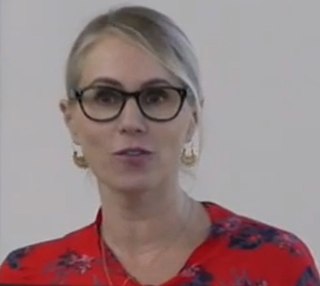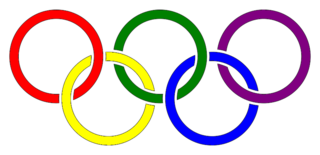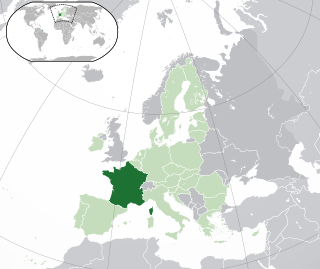| Athlete | Country | Sport | Games | Medal(s) | Notes | Regulations and verification |
|---|
 | Stanisława Walasiewicz (a.k.a. Stella Walsh) ‡ |  Poland Poland | Athletics | 1932, 1936 |   | Won a gold medal in 1932 and a silver medal in 1936. An autopsy discovered that Walsh was intersex and experienced mosaicism; it was determined she likely did not know, and her achievements have not been expunged. [13] [14] [15] [16] [17] [1] | There were no formal regulations in the 1930s. Anecdotally, Walsh's rival Helen Stephens reported that in 1936, Adolf Hitler personally groped her as a form of sex verification. [18] |
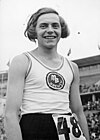 | Heinrich Ratjen † |  Nazi Germany Nazi Germany | Athletics | 1936 | | Ratjen's sex characteristics were ambiguous from birth. Though he was raised as female, and for many years competed as "Dora Ratjen" (including at the Olympics), he said he was conscious that he was somewhat biologically male from childhood. In 1938, he was arrested and held in Hohenlychen Sanatorium for a year, being examined by SS doctors who found Ratjen to have some intersex characteristics (not just male genitalia). Upon release, he was ordered to stop participating in sport and to assume a male identity. In later life, however, Ratjen (likely erroneously) claimed that the Nazis had ordered him to pose as female in order to bring sporting glory to the nation at their home Olympics. [19] [20] [21] | There were no formal regulations in the 1930s. After years of speculation and reportedly refusing to use changing rooms with other people present, Ratjen was accosted on a train and made to strip before being arrested. [19] |
 | Ewa Kłobukowska † |  Poland Poland | Athletics | 1964 |   | Kłobukowska won a gold and a bronze medal at the Olympics. [22] She is missing an X chromosome, which would not preclude her from competing in women's sports. An inadequate Barr body detection-based sex verification test following her Olympic success saw her stripped of her titles and banned from competition; though later corrected, none of her achievements have been reinstated. [23] [24] [25] [26] [27] | In 1960, the Olympics began mandating physical examinations, [28] which Kłobukowska passed. In 1967, World Athletics (IAAF) introduced chromatin testing for female athletes, [29] looking for "a single X-chromatic mass", i.e. two X chromosomes. [28] |
| Edinanci Silva Δ |  Brazil Brazil | Judo | 1996, 2000, 2004, 2008 | | Silva was born intersex but had surgery in the 1990s to allow her to compete in women's sport, before any Olympics appearance. She went on to compete at four Games. [30] [1] | In 1992, the majority of the sports federations under the IOC stopped performing any type of gender testing. Judo was one of the five federations that continued testing, and the IOC itself replaced the chromosome testing with a DNA-based test. This test was carried out on all female athletes in 1996. In 1999, the IOC stopped universal testing but reserved the right to test suspicious individuals. [31] The same test was used up to and including the 2008 Summer Olympics, but only when suspicions were raised. Athletes who had undergone "sex reassignment surgery" were allowed to compete, two years after surgery and meeting all other requirements. [1] |
 | Érika Coimbra Δ |  Brazil Brazil | Volleyball | 2000, 2004 |  | Coimbra was reported to have been born intersex but had surgery. She was subject to sex testing before being allowed to compete. [32] [33] | In 1992, the majority of the sports federations under the IOC stopped performing any type of gender testing. [31] Volleyball was one of the five federations that continued testing, [34] and the IOC itself replaced the chromosome testing with a DNA-based test. In 1999, the IOC stopped universal testing but reserved the right to test suspicious individuals. [31] The same test was used up to and including the 2008 Summer Olympics, but only when suspicions were raised. Athletes who had undergone "sex reassignment surgery" were allowed to compete, two years after surgery and meeting all other requirements. [1] |
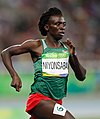 | Francine Niyonsaba Δ |  Burundi Burundi | Athletics | 2012, 2016, 2020 |  | Niyonsaba won silver in the 800 m race in 2016; unable to contest this event at the 2020 Games due to restrictions, she qualified and competed in the 10,000 m race. [35] Her intersex condition was revealed upon the ruling in 2019. [36] | In 2012, the IOC introduced testing based on measuring testosterone. [5]
Ahead of qualifying for the 2016 Summer Olympics, the IAAF was forced to suspend testosterone testing until at least 2017 due to losing a case brought by Dutee Chand. The IOC updated its policy around the same time and, in 2016, said they would also suspend testosterone testing while the IAAF was trying to support the tests. [37]
In 2019, World Athletics (IAAF) banned female athletes from competing in middle-distance running events and some others [lower-alpha 7] if they: - have an XY karyotype and
- have ≥5 nmol/L testosterone and
- do not have androgen insensitivity
|
 | Caster Semenya Δ |  South Africa South Africa | Athletics | 2012, 2016 |   | Semenya is an intersex woman with XY chromosomes. She has been subject to sex verification testing since the start of her professional career in 2009, at different times being allowed and disallowed to compete in events. A successful intersex sportswoman, she has been the focal point of debates and regulation regarding both intersex and trans athletes in the 21st century. She has refused to take hormone medication to reduce her natural testosterone, as instructed in 2019. [39] [12] She continues to mount legal battles against discriminatory athletic bodies. [40] |
 | Dutee Chand Δ |  India India | Athletics | 2016, 2020 | | Chand experiences hyperandrogenism. [41] [42] In 2014, her elevated testosterone caused the Indian Athletics Federation to remove her from its programme and ban her from events. She appealed to higher athletic bodies, which overturned the ban. [43] [44] [45] As a sprinter, she was unaffected by the 2019 restrictions on intersex characteristics in middle distance events; she offered the services of her legal team to Caster Semenya. [46] |
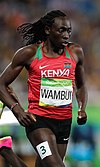 | Margaret Wambui † |  Kenya Kenya | Athletics | 2016 |  | Wambui has elevated testosterone levels, as revealed upon the intersex restriction ruling in 2019; refusing to take medication to reduce this, she was barred from competing in the 2020 Games. She has proposed athletic bodies introduce an open category to be inclusive of intersex athletes if they insist on the separation. [35] [36] [47] | Ahead of qualifying for the 2016 Summer Olympics, the IAAF was forced to suspend testosterone testing until at least 2017 due to losing a case brought by Dutee Chand. The IOC updated its policy around the same time and, in 2016, said they would also suspend testosterone testing while the IAAF was trying to support the tests. [37]
In 2019, World Athletics (IAAF) banned female athletes from competing in middle-distance running events and some others [lower-alpha 7] if they: - have an XY karyotype and
- have ≥5 nmol/L testosterone and
- do not have androgen insensitivity
|
 | Barbra Banda † |  Zambia Zambia | Football | 2020 | | After her Olympics appearance, Banda was banned from an African competition due to natural testosterone levels above those accepted by the Confederation of African Football (CAF); she was soon after allowed back to compete in other African competitions, as well as tournaments sanctioned by FIFA. [48] Banda reportedly takes medication to reduce her levels of testosterone; there was criticism that the CAF's "gender eligibility test" was more restrictive than necessary, with FIFA also criticised for the inconsistency of requirements between tournaments. [49] | In 2011, FIFA issued updated gender verification regulations, which state that "each participating member association shall, prior to the nomination of its national team, ensure the correct gender of all the players to be considered for such nomination by actively investigating any perceived deviation in secondary sex characteristics". [50] : 7 Investigation is to be pursued if any or all of the player, the association, the appointed medical officer, and/or the Chief Medical Officer, both requests and has "a direct legal interest" in the result of a gender test. [50] : 10 The testing process is not outlined, but says "sex hormone levels" must be provided (without elaboration) and, if unsatisfactory, that "the player shall undergo a physical examination performed by an independent expert." [50] : 12 |
 | Imane Khelif † |  Algeria Algeria | Boxing | 2020 | | After their Olympics debuts in 2020, Khelif and Lin Yu-ting were disqualified from a 2023 International Boxing Association tournament due to failing the eligibility requirements. Lin was stripped of her bronze in that tournament and Khelif removed from the gold medal match. [51] | The International Boxing Association rules were not explained, but banned Khelif reportedly based on "characteristics" that should prevent them from fighting other women. [51] |
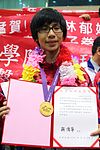 | Lin Yu-ting † |  Chinese Taipei Chinese Taipei | Boxing | 2020 | | After their Olympics debuts in 2020, Lin and Imane Khelif were disqualified from a 2023 International Boxing Association tournament due to failing the eligibility requirements. Lin was stripped of her bronze in that tournament and Khelif removed from the gold medal match. [51] |
| Beatrice Masilingi Δ |  Namibia Namibia | Athletics | 2020 | | Condition announced by World Athletics ahead of appearing at the 2020 Games. [52] The Namibia National Olympic Committee criticised World Athletics for breaking a confidentiality agreement in naming Masilingi and fellow teenage sprinter Christine Mboma, who could (and would) both compete over a different distance. [53] | In 2019, World Athletics (IAAF) banned female athletes from competing in middle-distance running events and some others [lower-alpha 7] if they: - have an XY karyotype and
- have ≥5 nmol/L testosterone and
- do not have androgen insensitivity
|
| Christine Mboma Δ |  Namibia Namibia | Athletics | 2020 |  | Condition announced by World Athletics ahead of appearing at the 2020 Games. [52] The Namibia National Olympic Committee criticised World Athletics for breaking a confidentiality agreement in naming Mboma and fellow teenage sprinter Beatrice Masilingi, who could (and would) both compete over a different distance. [53] |
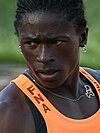 | Aminatou Seyni Δ |  Niger Niger | Athletics | 2020 | | Seyni primarily contests sprint distances, but also ran 800 m sporadically and 400 m regularly until 2019, when she was told she had tested positive for intersex characteristics and would be unable to race middle distance. She ran in the 200 m event, a distance over which she holds the Nigerien national record, at the 2020 Games. [35] [54] |
 | Pedro Spajari Δ |  Brazil Brazil | Swimming | 2020 | | Having broken the FINA World Junior Championship record for 100 m freestyle in 2015, [55] Spajari was diagnosed with Klinefelter syndrome, an XXY chromosomal condition in natural men, in 2016. He was aiming to qualify for that year's Games when decreased testosterone levels, which negatively affected his performances, was noticed. He was approved to take hormone supplements, and competed in 2020. [56] [57] | Sex verification is not conducted on athletes in the men's categories. [58] If a male athlete's performance is considered suspicious, doping controls are used. [59] |
















